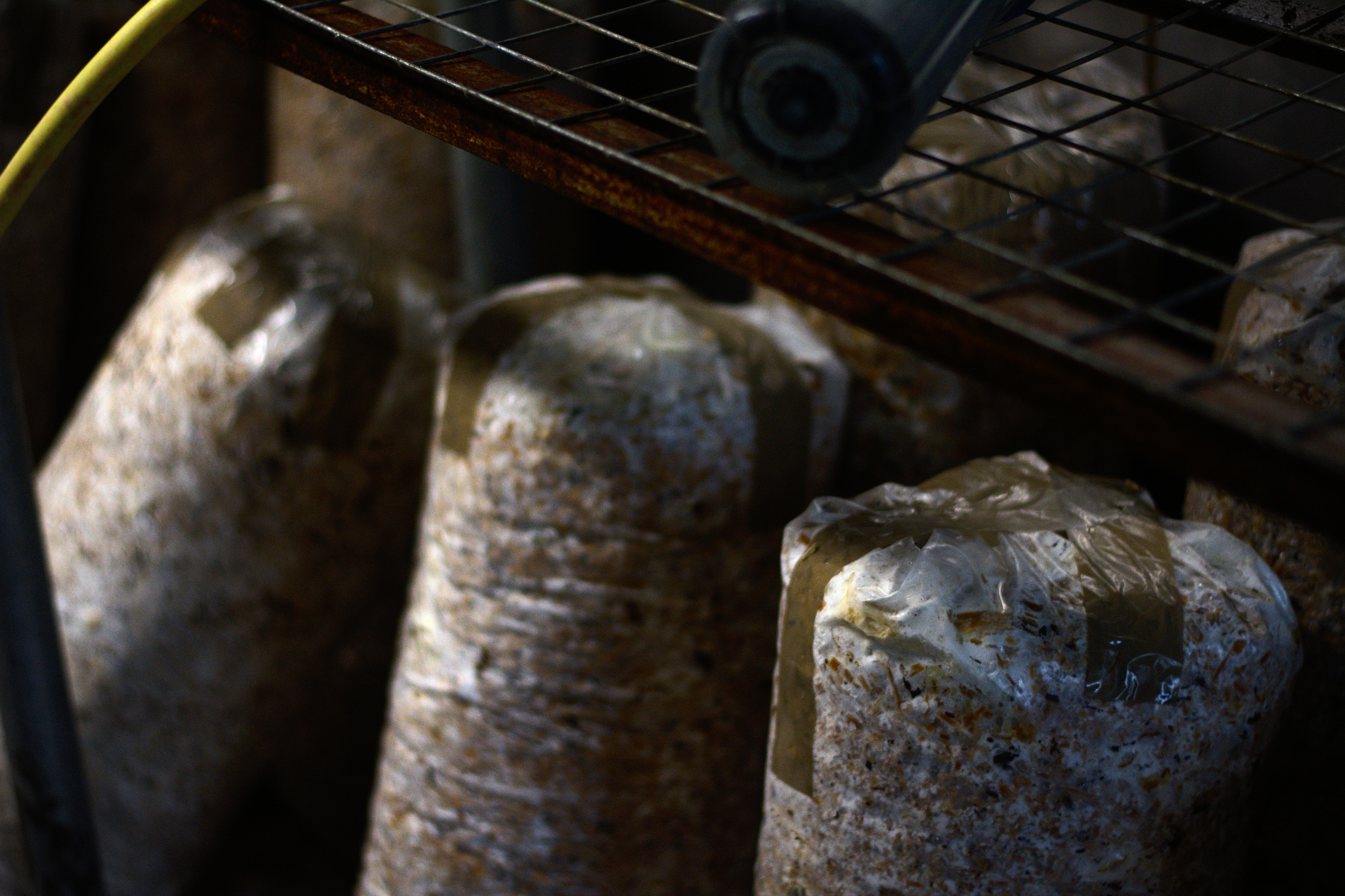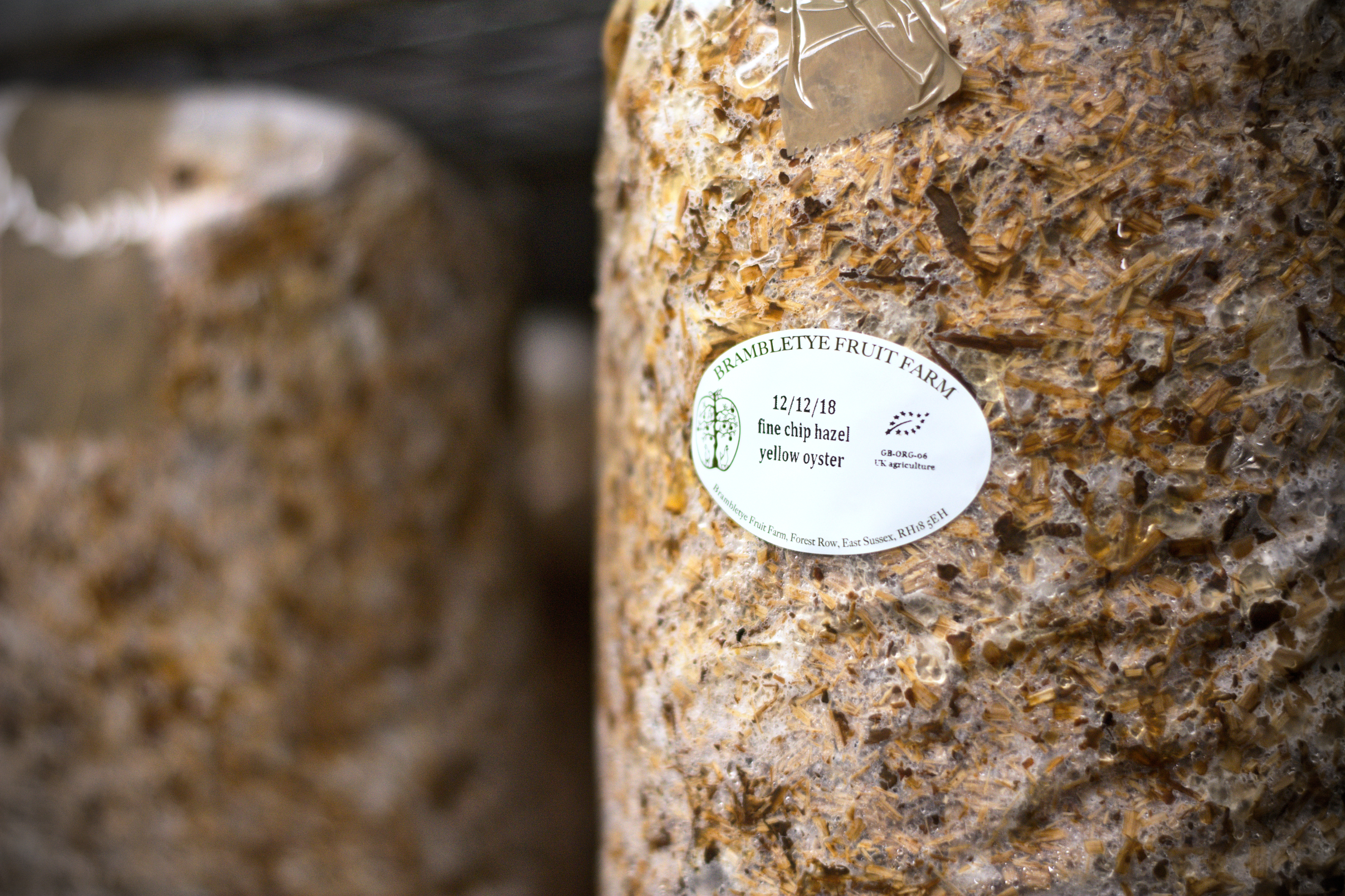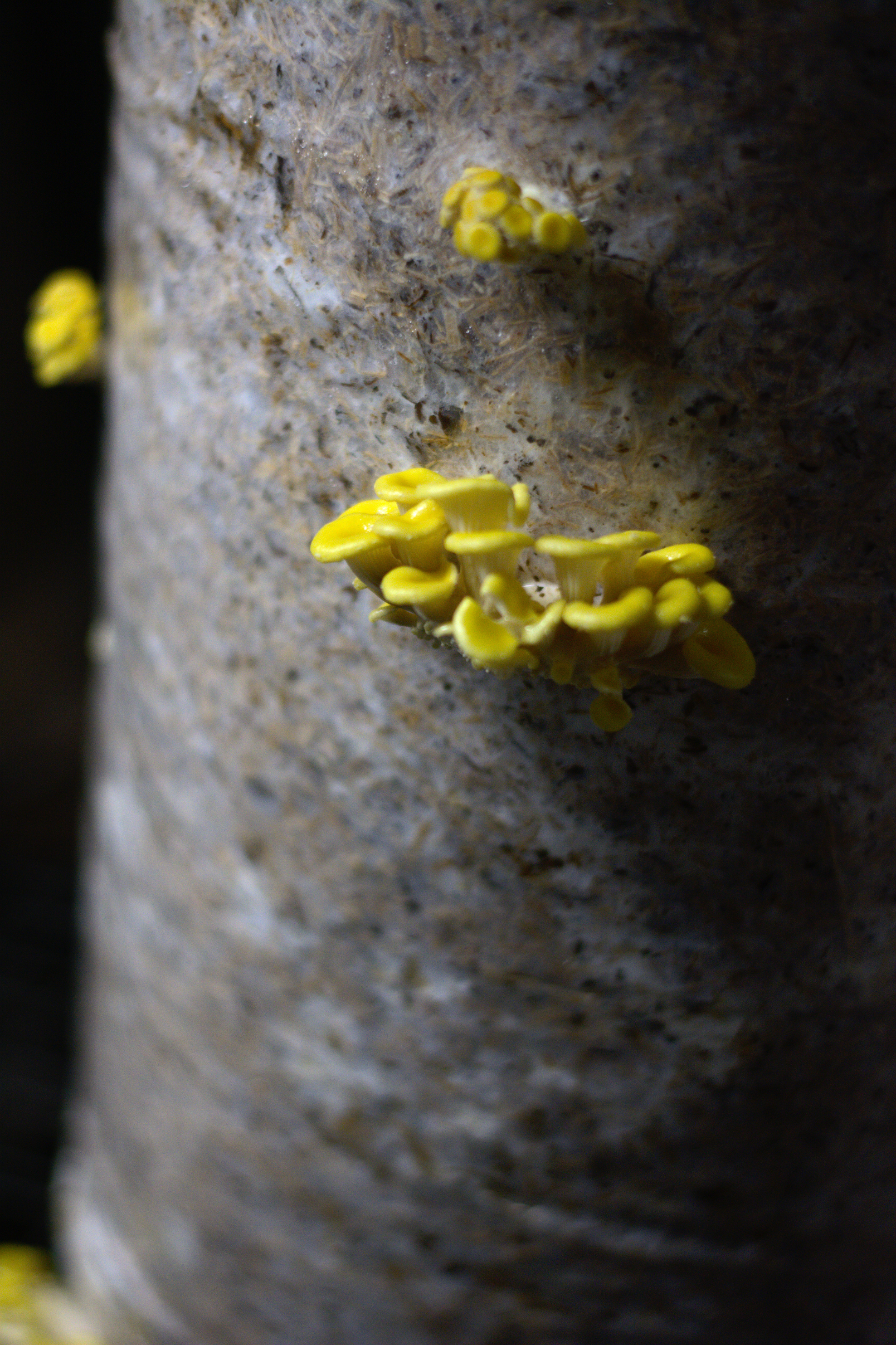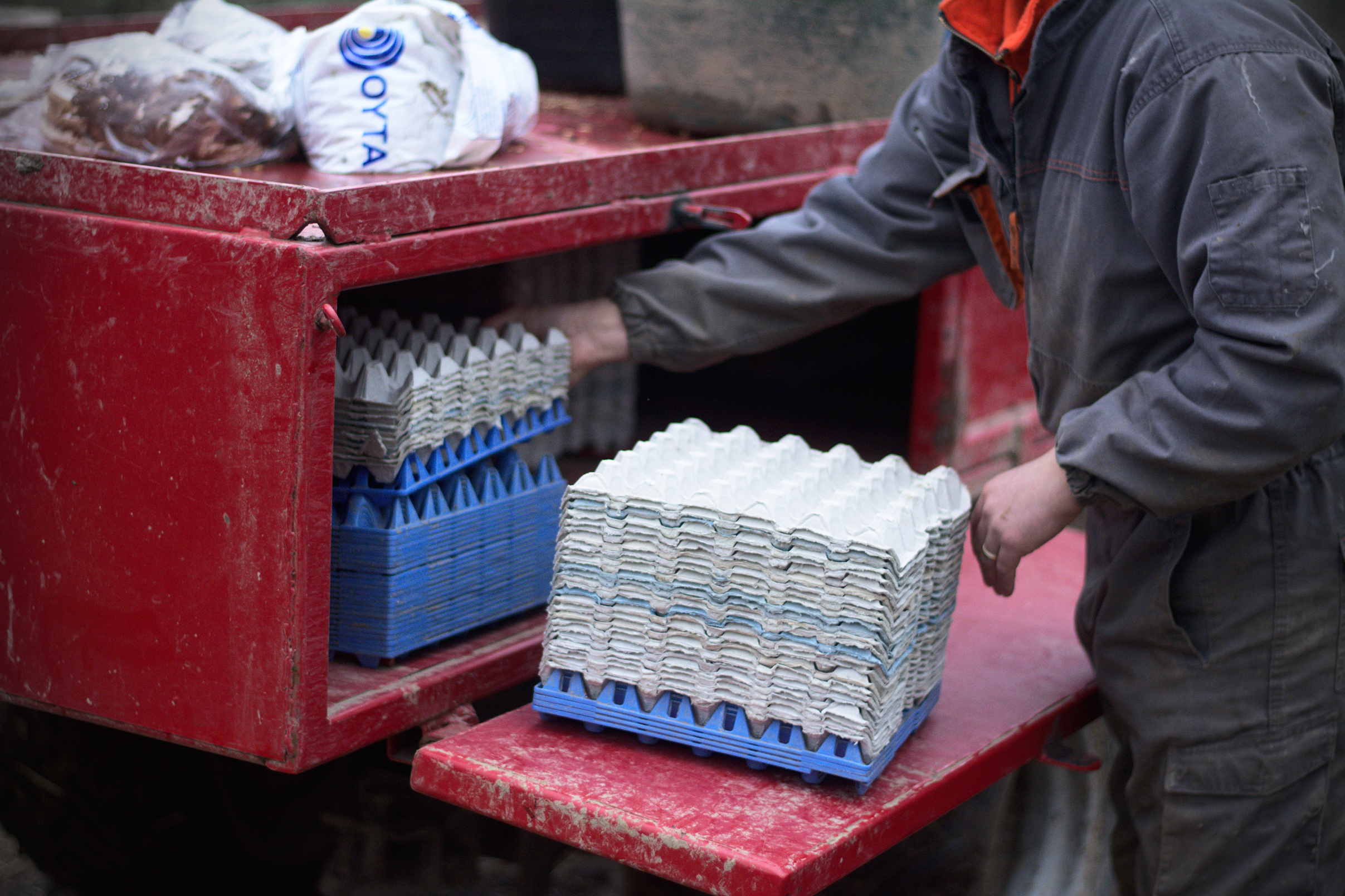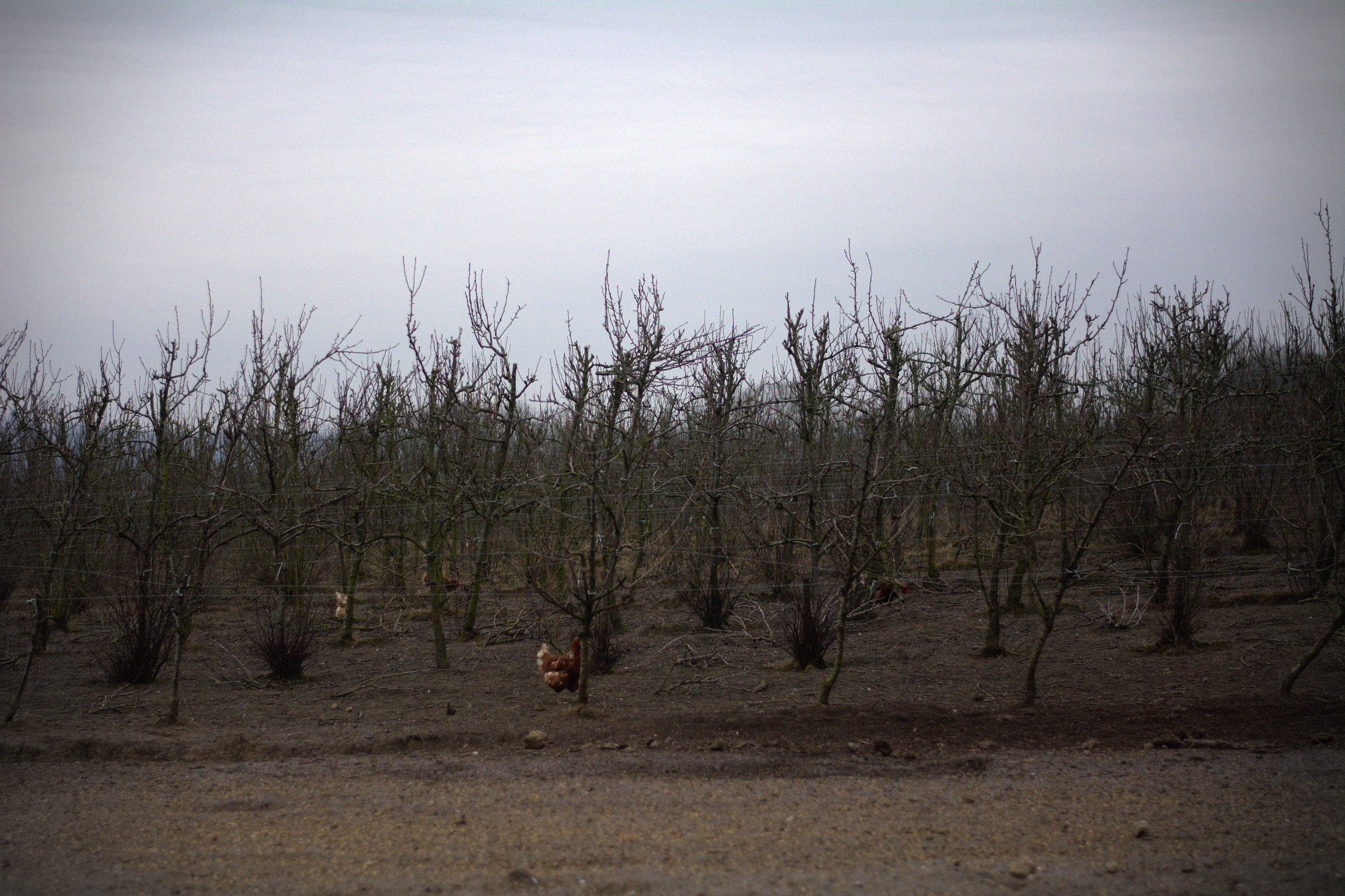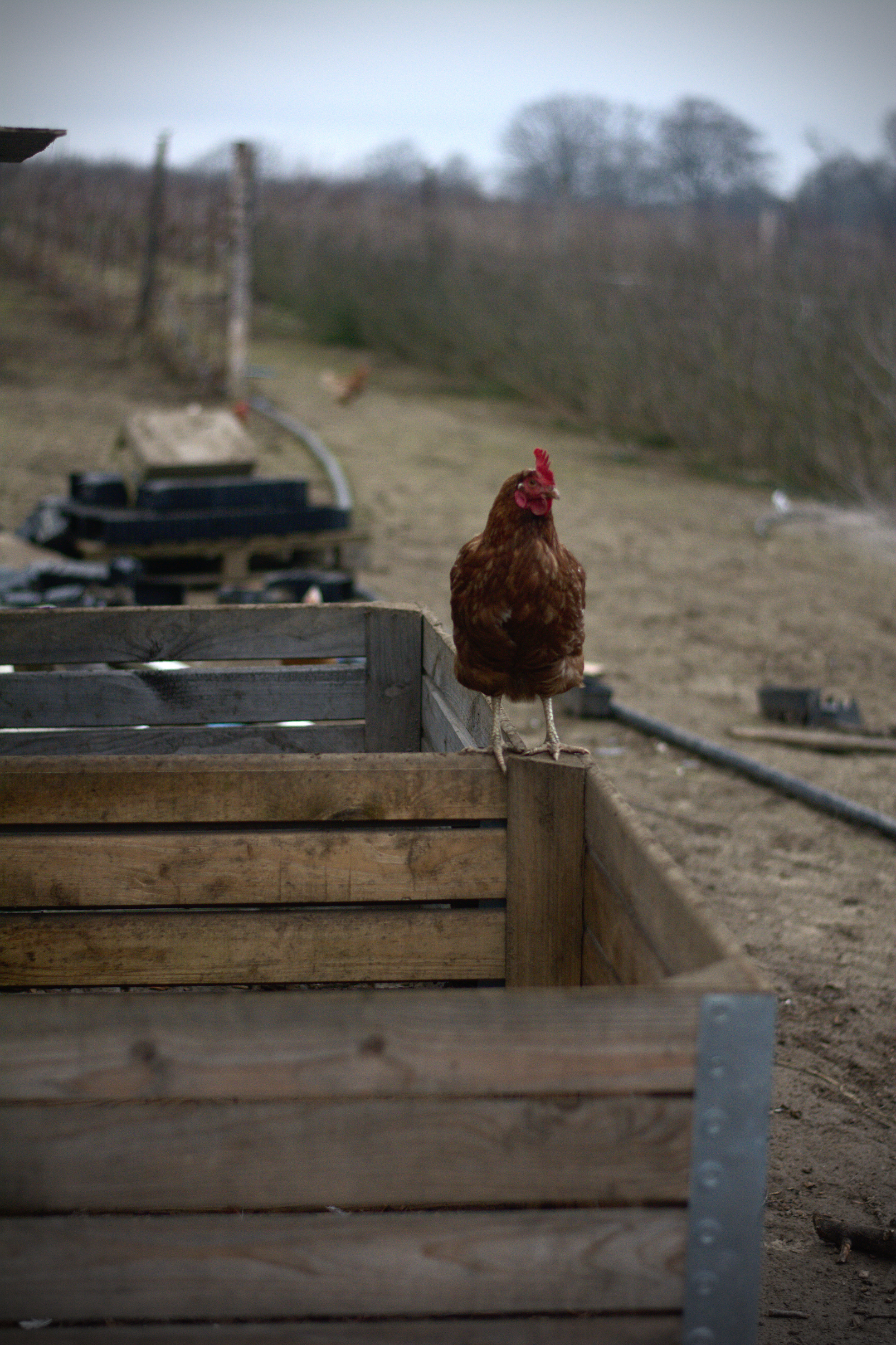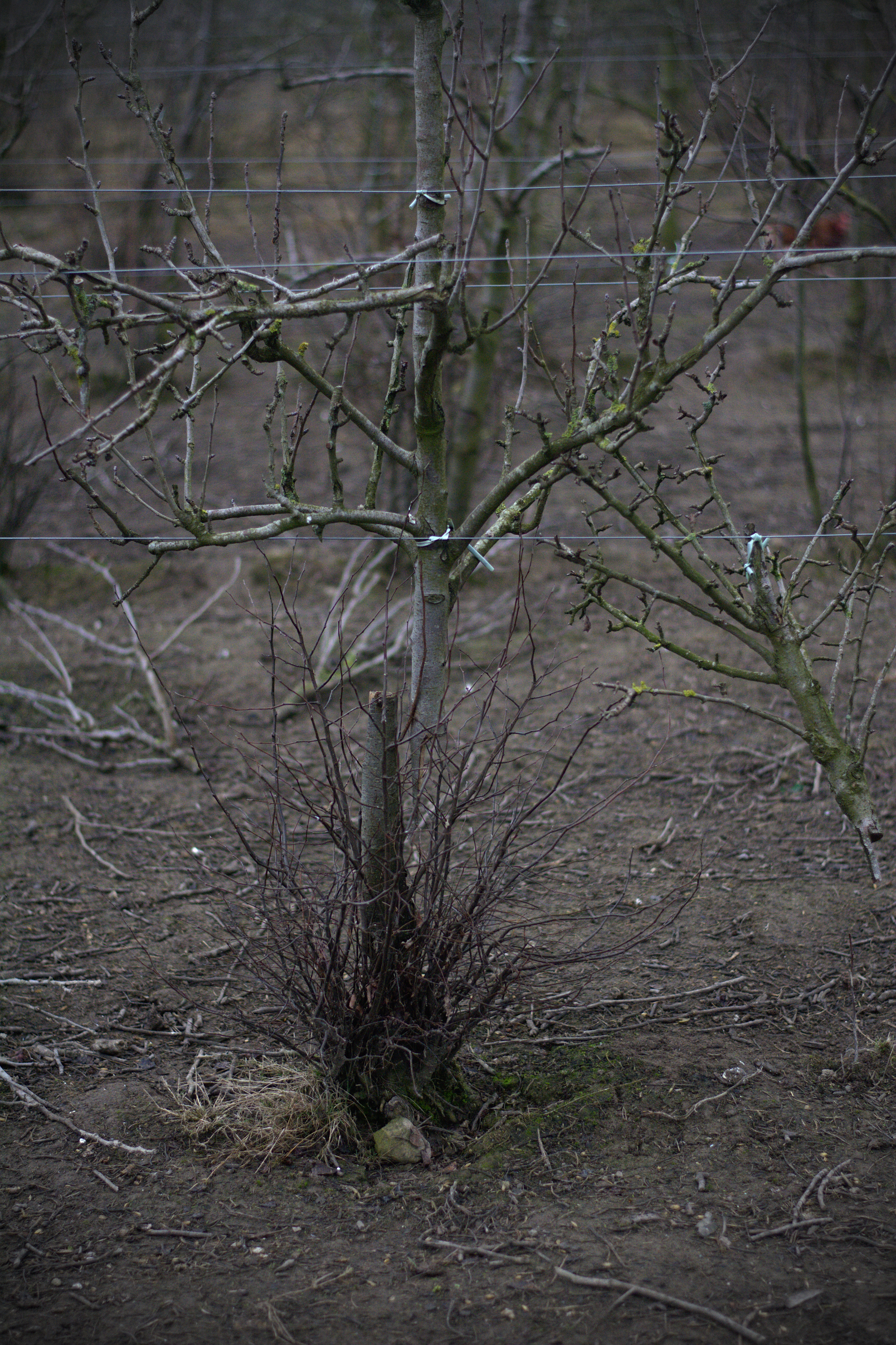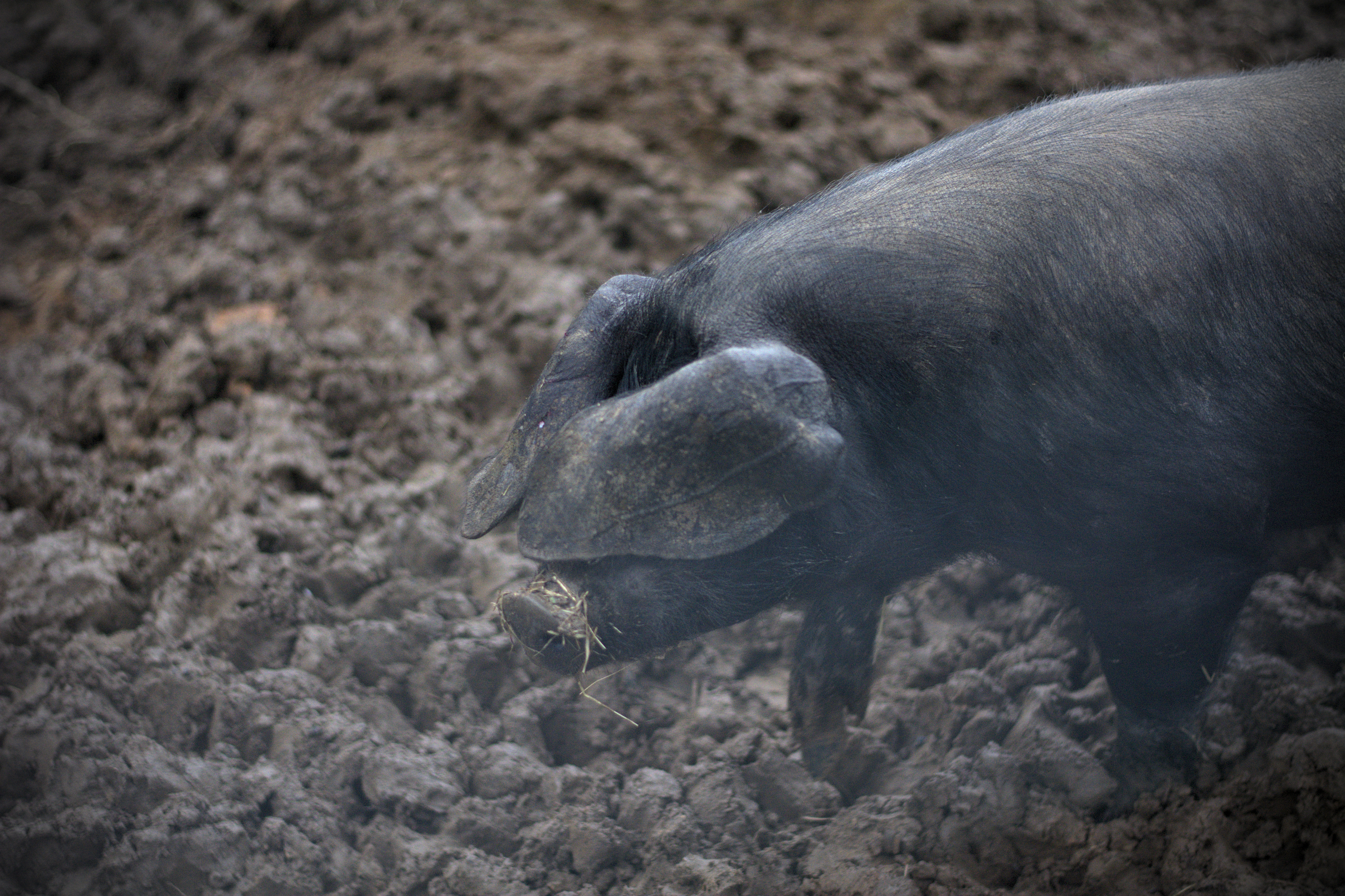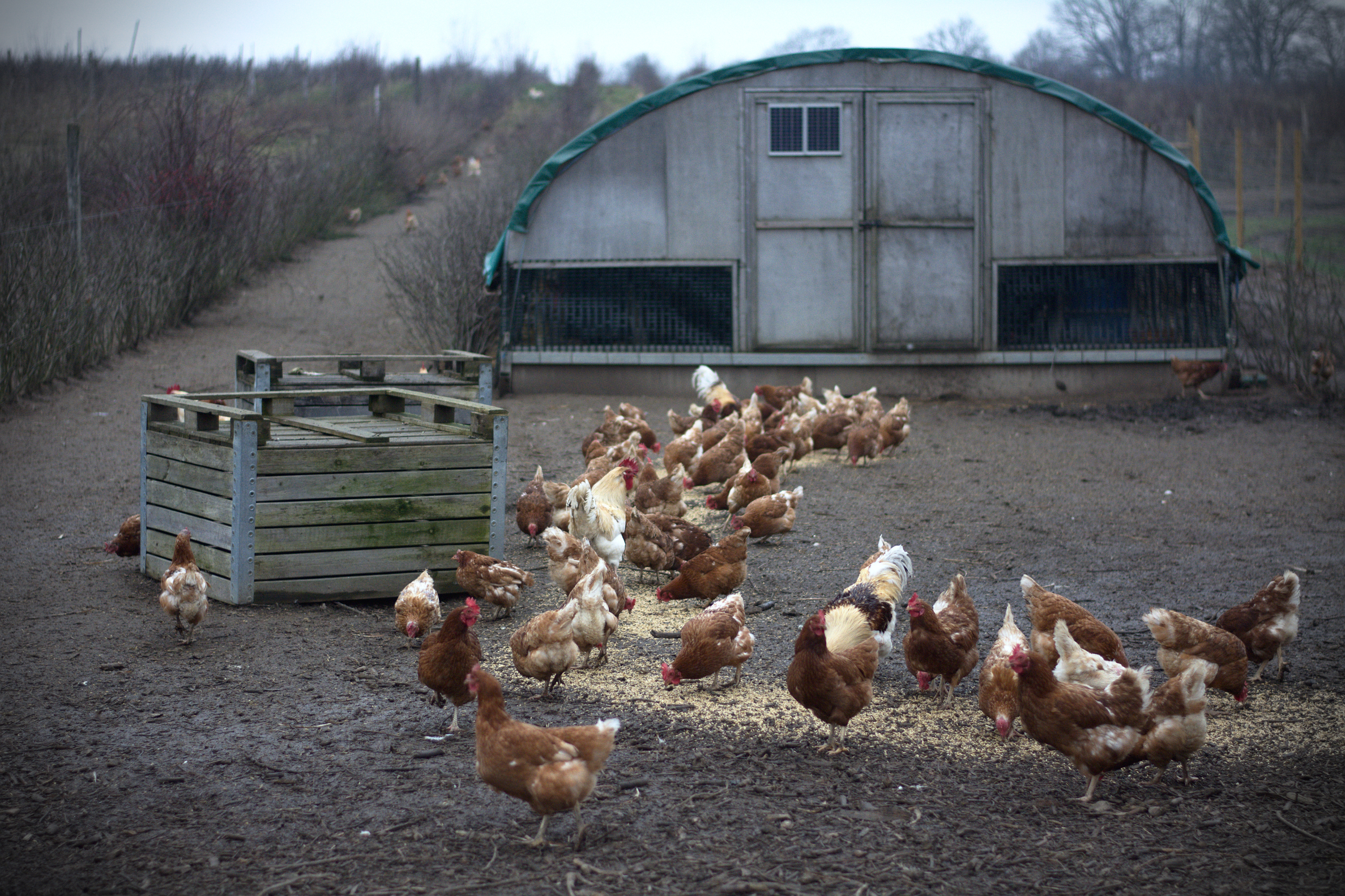
The roads winding through the countryside, some tree-sheltered and some opening onto wide rolling fields belie how close we are to London and the grey January concrete I've just left behind.
Although the weather is downcast and gloomy, the skies heavy with cloud and light drizzle, the journey out of my corner of South East London quickly and always surprisingly opens out into fresh air and the wide landcapes of West, then East Sussex.
Most of the fields I pass are brown, the work happening underground. The quiet surface appears asleep with no visible sign of life. Most of the winter produce is cropped now and all that remains is either stumpy and scrubby or muddy and lumpy.


I wonder if this is the best time to visit a fruit farm. But I wanted to see where the work of growing began. Normally all you see in your fruit bowl is the gloriously ephemeral end result. You give it little thought as the juice from the berries runs down your arm and chin, but here, on a cold and muddy morning, you can see the long journey from it's soily and unglamorous beginnings.
Brambletye biodynamic fruit farm near the small town of Forest Row, is down a long and bumpy road that after a few twists and turns becomes little more than two muddy ruts. I drove past the ruins of the 17th century Brambletye manor, of which there are only separated halves of the facade remaining, and knocked on the door of what I took to be the farm house. Two large dogs (I'm not good with breed names) galloped around me, and the lady of the house, aproned and with flour covered hands like the country version of a seaside postcard told me I was in the wrong place. A great shame, as the smells from the kitchen wafted out the door like siren song.
A few minutes later and slightly further along the road, I stepped from the car into the mud of the farm then got immediately back in and changed out of my towny white trainers into wellies.
Greeting me were Ellie and her two year old daughter who was well wrapped up with a wooly hat pulled down over her ears, and coat and scarf drawn up around her, but not quite able to prevent a little cold red nose poking out.
Crates of bottled apple juice were stacked high all around ready to be sent out, and the big barn behind was being swept out by Stein Leenders, clad in dark blue overalls and dusty boots. He and Ellie have been farming on this land for 10 years now after he moved over from Holland along with 15,000 apple trees to what was then a rented field.
The first thing Ellie took me to see were the mushrooms, growing in an old shipping container. Rows of plastic barrel-like sacks, packed tightly with mushroom spores and wood chippings from the hazel trees in the neighbouring woods were sat neatly on shelves. The damp air and low hum of the artificial lights casting a Bladerunner like glow gave the impression of a strange tunnel, lined with embryonic alien life. Here and there, out of the plastic where holes had appeared, sprouted little mushrooms. Pink, yellow, and blue winter oyster mushrooms were vivid in the half-light, slowly growing larger until harvesting. Growing this way recreates the exact conditions all year round as if they were growing in the forest. This was very different to the mushroom farm's long stacked beds I spent weekend mornings picking in as a teenager to earn money to buy the latest A-ha album.
A few minutes walk from the mushrooms and we were on the crest of a hill, the highest point of the farm overlooking the sweeping High Weald. Rows of stunted apple trees, Evita, Santana and Red Topaz varieties, lined the field, sounding like a musical revue. Leafless and jagged, it seemed as if a fierce wind had blown through, stripping everything. On this exposed hillside, it probably had.
Chickens, lots of them, run freely and curiously among the slim tree trunks, the grass growing happily under their feet. "You don't see this very often," says Ellie, picking up her daughter, who was starting to get cold and a little hungry, as was I. She tells me the chickens are owned by a neighbouring farmer and share, and therefore fertilise, the land. We walk along to their coop, a long, movable shed where in the porch-like entrance is a window through which a conveyor belt's end pokes through. One egg sits proudly on it.
Behind this, through another door is the main room where the chickens can sleep, lay eggs and hang out, possibly watching telly, or whatever it is chickens do on their days off. Fifteen or so are clucking around happily and when we step out the door we are greeted by a large crowd of them, gathered like fans at the stage door of the Palladium.
We head back toward the main apple shed, past rows of gooseberry bushes, the green and the sweeter purple types. Past cherry trees, blackberry bushes and then the pear trees, of which there are a few varieties such as Wildeman and Concorde. Every tenth pear tree is a pollinator, that is to say, a different variety. They are grafted onto quince roots and you can see the quince trying to fight it's way up through the soil around the base of the trees.
Red and blackcurrant bushes are being pruned and a few cabbages, kale, cavolo nero remain, the end of the season approaching. As spring arrives, so will 'the hungry gap', the space between the hardy winter root vegetables and brassicas growing and the fruit season starting. This is when the farm maintenance and planting happens.
The longer storing varieties of apples, held back for this lull -- some in low oxygen storage -- can be pressed for juice, ensuring a constant year round supply. Vats of cider vinegar are in the background too; the raw, unpasteurised stuff, full of good bacteria and culture, just like my French family. These are sold along with the juices, purées and fruit and veg at the farmers markets and shops the farm supply.
The apple pulp and waste gets fed to the two pigs, which, as it comes out of the pigs, feeds the land on which the apples grow, just like with the chickens eating the plants in the orchard.
It's an inspiring sight to see, and the work and dedication they put into their farm is uplifting in these strange times. I tentatively ask about what 'Brexit' may mean to them, and Ellie tells me they use mainly local pickers in season, and plenty of restaurants and suppliers have already been in touch to see what they can use on a local produce level. So perhaps, if there is anything good to come out of this whole farce, it may be that we become much more connected to the seasons and to shopping locally rather than relying on imports.
Ellie and Stein care about their farm, the land and their products and we as consumers should be grateful for such dedication. We are able to get real food grown with care and respect and not covered with 'Roundup' or picked before being ripe and cold-transported thousands of miles. Perhaps it's time we toned down our sense of entitlement to all year round asparagus and enjoyed things as they appear from the land before us. It certainly leaves a better taste in the mouth.
Brambletye Fruit Farm, East Sussex
London Farmers Markets
Orchard eggs

Switchel
Raw, unpasteurised cider vinegar, as produced on Brambletye farm has many supposed health benefits, not least I suppose because it's all natural. It's not just something to make a salad dressing or vin d'alho with, either. People have been drinking it for centuries. There are so many varieties, but if you taste proper vinegar you'll never go back. As well as apple, there are many raspberry vinegars, parsnip ones, red and white wine, obviously, Banyuls vinegar, which is like having a glass of port, aged vinegars, young ones, all kinds.
I use the cider vinegar to make 'switchel,' a centuries old drink that deserves a revival. It's refreshing and interesting and you can make it as sweet or sharp as you like. I prefer sharp to add some zing, there are already to many sweet drinks around. For a non-drinker it's something that tastes a little more grown up than the seemingly thoughtless offerings of children's fizzy squash packaged in adult designs and it's not based around sugar.
It's important to also use raw honey here to get the full healthiness.
Make a bottle, keep it in the fridge and swig merrily away, knowing it's all pure.
Ingredients
1tbsp raw honey
Juice and zest of a lime
4tbsp raw cider vinegar
A thumb of ginger, grated
Water to top up (or leave it neat and dilute with sparkling water)
Method
Dissolve the honey in a few tablespoons of hot water then top up with the lime juice, vinegar and grated ginger. Funnel into a 500ml sterilised glass bottle and add fresh, filtered water to the top. Seal and leave to infuse for a day.
Keep in the fridge, serve with ice or just straight in short glasses.

